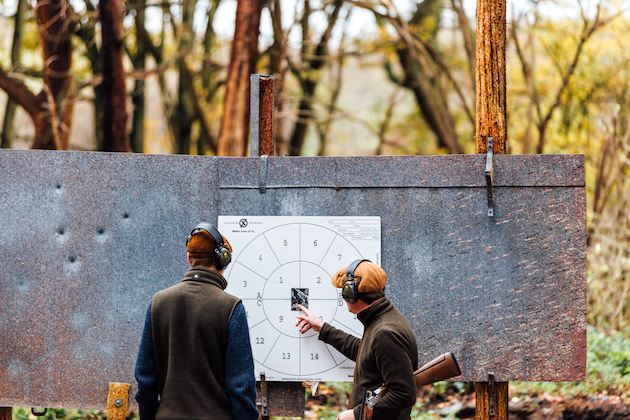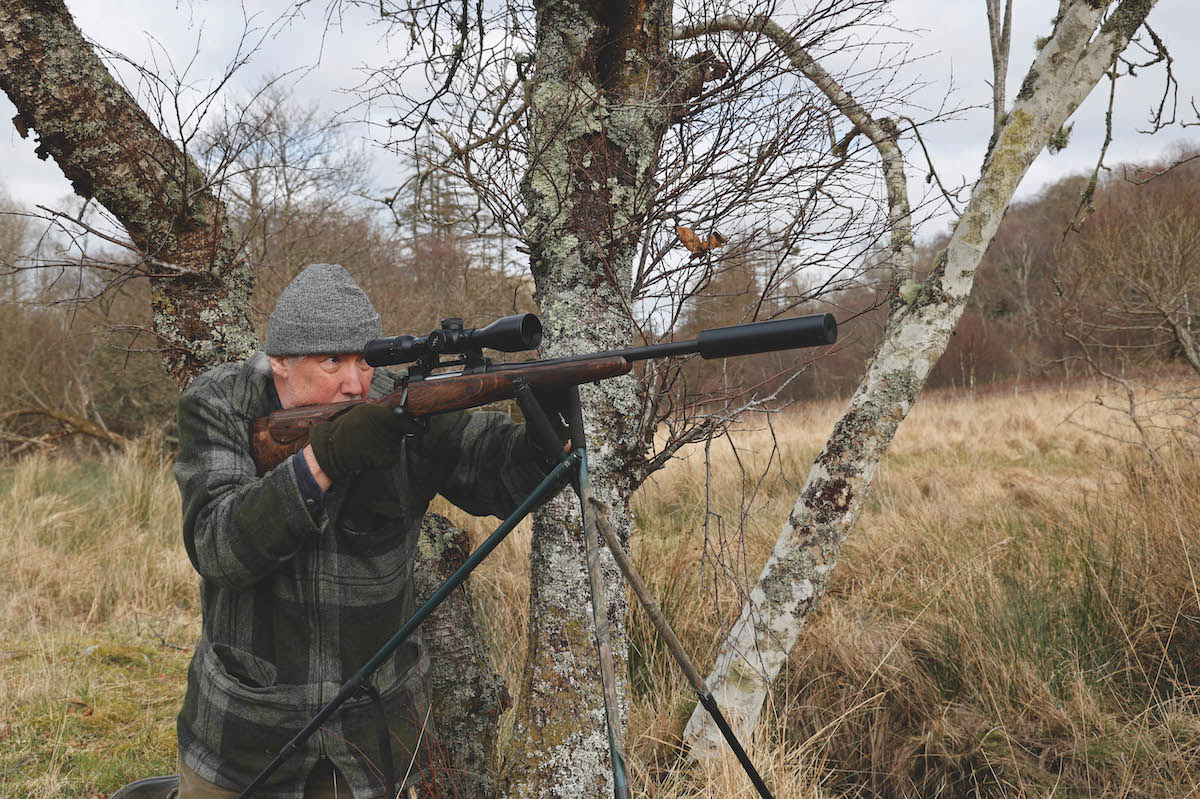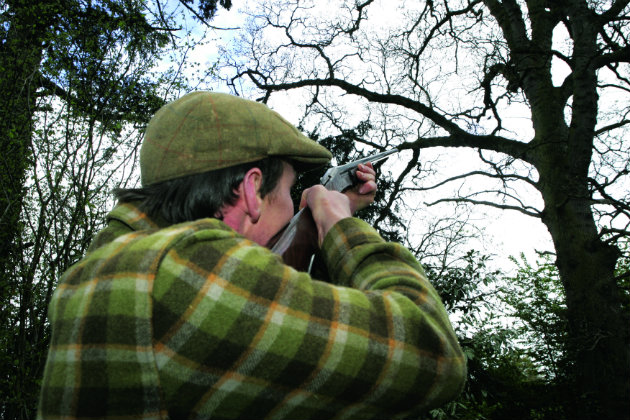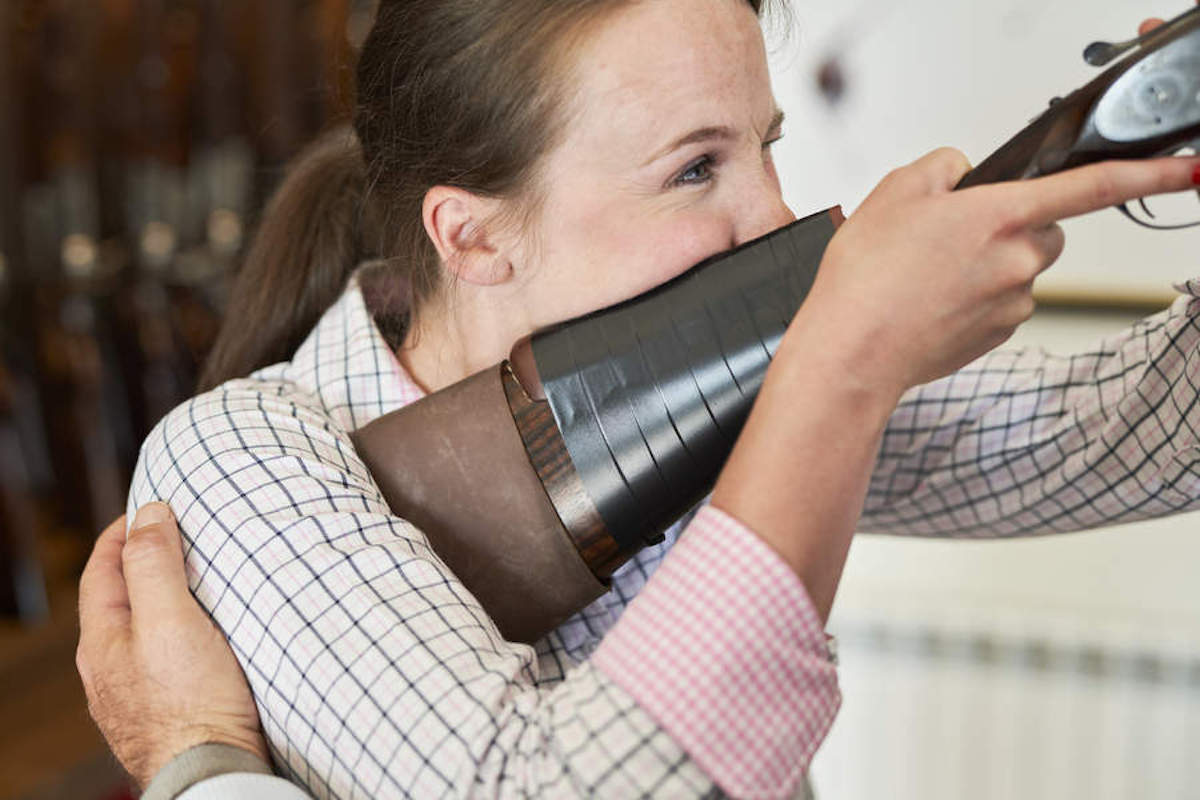Why you should always pattern your shotgun
Wondering how to improve your accuracy?

shotgun patterns
Many, if not most, shooters never bother to pattern their shotguns. But this is probably a mistake. At the very least patterning your shotgun reveals the gun’s point of aim.
In addition it shows you whether your gun makes good patterns at different ranges when you’re using a favourite ammunition brand.
What you’re looking for is a regular, even pattern – whether you’re shooting live quarry or clays.
A rifle will put a bullet in nearly the same place every time at a given range. But pellets fired from a shotgun end up in different places within the pattern each time a shot is fired.
At extreme range the pattern will actually break down and although you are ‘on target’, the bird or clay pigeon can escape through a hole in it. It is your hardware that is letting you down.
How to pattern your shotgun
- The best way is to pattern your gun at different ranges with different ammunition. This will show the best possible combination for the quarry or the clay.
- The greater the range, the more choke will be needed to give the required pattern density.
- If you are regularly shooting at ranges of around 40 yards, use ¾ or full choke – nothing else will do.
- Forget about ballistic performance for the time being, we can assume that the individual pellets all have the required energy to “kill” the target. The pattern will break down long before the individual pellets run out of puff.
- As range increases, the percentage of useful pellets left in the pattern will continue to decrease.
- Rather than saying we need x% of the shot load in a pattern to ensure a clean kill, we should be looking for a minimum number of pellets in the pattern, whatever the load and range to do the job.
- My view is that we need 130 -140 pellets as evenly distributed as possible.
- Let’s say we have 300 pellets in the load – at 30 yards, you may have 270 pellets in the pattern representing 90% of your original load and at 40 yards 195 pellets representing 65%.
- This is still plenty of hits to do the job, but a lesser percentage than some people think is required. The “percentage” does not matter as it naturally continues to decrease with range. So first lesson is to choose a load that regularly gives us enough pellet strikes.
I am a 28-bore fanatic, so how does it compare to using a 12-bore with a comparable load?
According to the laws of physics, the narrower tube will initially throw a tighter pattern until down range it will equal out and then interestingly, at longer ranges, the smaller bore will be left wanting compared to the twelve.
Why is this?
Both guns have 32inch barrels with ¾ and full choke and both fired 28gm loads in a plastic wad.
In the 28-bore, I used a Bornaghi continental shot size 7 and in 12-bore our own CSP 6½ which is as near as makes no difference – average pellet counts for both loads was in the region of 325.
AT 20 YARDS
With ¾ choke it came as no surprise to see the smaller gun out perform the 12-bore, printing 98% of its load in to the 30inch circle compared to the 12’s 91%.

AT 30 YARDS
With full choke, we have virtual parity with both bores placing just under 84% of the load in the 30inch circle (270 pellet strikes for the 12-bore, 271 for the 28).

Numbers however, do not tell the whole story. Look at the pattern sheets and you will see that although the numbers are almost identical, the 28-bore has thrown a far more even, regular pattern over the whole sheet.
The 12’s pattern has far more holes in it, although you could argue that it has for some reason thrown the pattern higher and to the right.
Could be pilot error, but even if you shifted that same pattern square to the sheet, I still know which gun would be my weapon of choice.
AT 40 YARDS
With full choke, the statistics suggest that the 12-bore is beginning to out perform the 28 with 56% of the pellets hitting the mark (192 strikes) compared to 51% (178 strikes) from the 28-bore.

Both these still have more than enough pellets in the effective pattern to ensure a clean kill.
But again, the pattern sheet shows that the 28-bore is still throwing a more even pattern.
How do we explain these differences?
In comparison to the 12-bore, why does the 28 appear to lose pellet numbers at ranges greater than 30 yards? The answer is in the length of the shot column.If you look at the 12-bore cartridge it has a much ‘squarer’ load whereas the 28-bore is at least twice the length in the cartridge.
The falling off of the perceived effectiveness can be explained by more extensive damage to pellets in the longer column, as the load passes up the barrel.
These damaged pellets don’t fly as true as the squarer load of the 12-bore, leaving the main mass of the pattern by flying off at an angle.
We have to envisage patterns in three dimensions, not just the two shown on the pattern plate.
The 12-bore has a much shorter shot column than the 28 which means that not all the pellets with the 28 arrive at the target at the same time.
How to improve your shooting accuracy
How to improve your shooting accuracy: How can you hit the ground running next season? Season experts give their hints…
More on pattern plates
- A pattern plate allows you to see where your shot is placed in relation to your barrel.
- It should be shot from 16 yards if looking at gun fit, as there is a ratio of how much to move the stock to adjust the placement of the pattern.
- Its other use is to test gun, cartridge and choke combinations. This can be done at any distance to suit your chosen discipline or quarry. When testing, you would be looking for a nice, even distribution of pellets in an even circular pattern.
- Another thing to look at is the placement of the shot in relation to the aiming mark. If you draw a horizontal line through the aim point the shot should be 60 per cent above and 40 per cent below the horizontal line. This can be adjusted by altering the drop measurement on the stock. If you draw a vertical line through the pattern it should be even on both sides. This can be altered by movement of the cast on the stock.
- Make sure you have a safe backdrop and wear safety glasses when shooting at a pattern plate.









